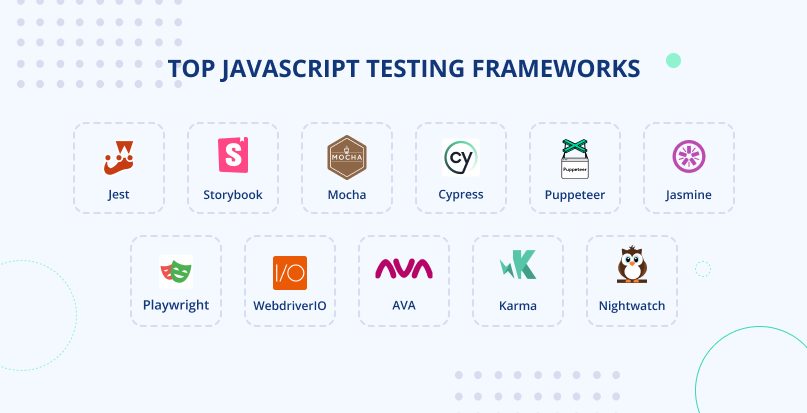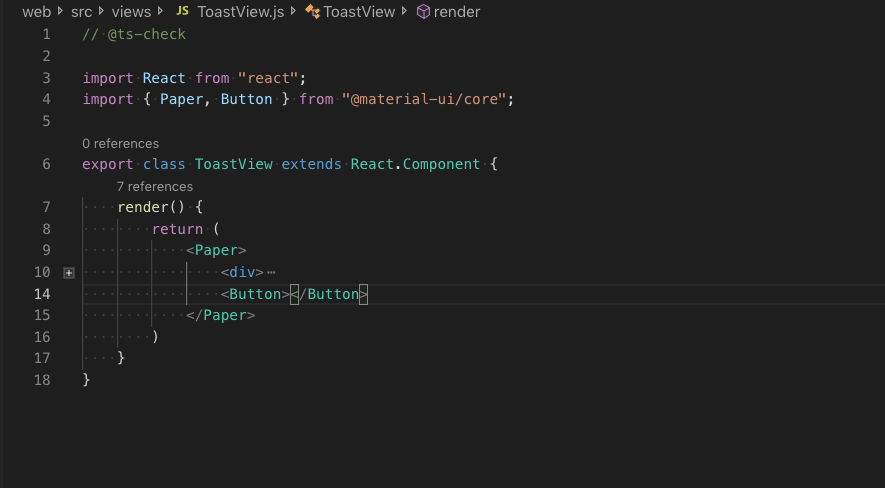In the fast-paced world of web development, the reliability and stability of our applications are paramount. Writing robust, maintainable code requires an equally robust testing strategy. For years, Jest has stood as a titan in the JavaScript testing landscape, offering a delightful, “zero-configuration” experience packed with powerful features. It has become the de facto standard for projects built with React, Vue, and Node.js. However, the ecosystem is constantly evolving. New patterns emerge, performance bottlenecks are discovered, and alternative tools challenge the status quo.
This article serves as a comprehensive update on the state of Jest, or the latest Jest News, if you will. We’ll move beyond the basics of expect(sum(1, 1)).toBe(2) and dive into the modern features, advanced techniques, and best practices that define effective testing in today’s development environment. We’ll explore how Jest integrates seamlessly with the modern React ecosystem, covering everything from React Testing Library News to strategies for testing complex state management solutions. Whether you’re a seasoned developer looking to optimize your test suite or a newcomer aiming to build a solid foundation, this guide will provide actionable insights to elevate your testing game.
What’s New with Jest’s Core Fundamentals?
While Jest’s core API has remained remarkably stable, recent versions and evolving community practices have refined how we approach fundamental testing concepts. Understanding these nuances is key to writing more effective and maintainable tests.
Modern Asynchronous Testing and Matchers
Modern JavaScript is inherently asynchronous. Testing promises, async/await functions, and other asynchronous operations is a daily task. Jest has long supported this, but the modern syntax makes it cleaner than ever. Using async/await directly in your test functions is the standard approach. Combined with powerful promise-based matchers like .resolves and .rejects, you can write highly readable and expressive async tests.
Consider a function that fetches user data from an API. A modern Jest test would look like this:
// api.js
import axios from 'axios';
export const fetchUser = async (userId) => {
if (!userId) {
throw new Error('User ID is required');
}
const response = await axios.get(`https://api.example.com/users/${userId}`);
return response.data;
};
// api.test.js
import axios from 'axios';
import { fetchUser } from './api';
jest.mock('axios'); // Mock the entire axios module
describe('fetchUser', () => {
it('should fetch a user successfully', async () => {
const userData = { id: 1, name: 'Leanne Graham' };
axios.get.mockResolvedValue({ data: userData });
// Use .resolves to unwrap the promise and assert on the value
await expect(fetchUser(1)).resolves.toEqual(userData);
expect(axios.get).toHaveBeenCalledWith('https://api.example.com/users/1');
});
it('should throw an error if no user ID is provided', async () => {
// Use .rejects to assert that a promise should fail
await expect(fetchUser(null)).rejects.toThrow('User ID is required');
});
});This example showcases not only clean async/await syntax but also the power of Jest’s mocking capabilities, which are essential for isolating tests from external dependencies like network requests.
The Evolution of Mocking: From Basic Mocks to ESM
Jest’s mocking system is one of its most powerful features. The ability to replace dependencies with controlled fakes is crucial for unit testing. While jest.mock() and jest.spyOn() remain the workhorses, the JavaScript ecosystem’s shift towards native ECMAScript Modules (ESM) has presented new challenges. Jest has been actively working on improving its native ESM support. For complex scenarios involving ESM, developers can now look to jest.unstable_mockModule, which provides a way to mock modules in the new module system, though it’s still evolving. This is a critical area of Jest News to watch as ESM becomes more prevalent in frameworks like Next.js News and Vite News.
Integrating Jest with the Modern React Ecosystem
Jest truly shines when paired with React. However, the way we test React components has shifted dramatically from testing implementation details (with tools like Enzyme) to testing user-centric behavior. This is where the React Testing Library (RTL) comes in.

The Unbeatable Duo: Jest and React Testing Library
React Testing Library provides a set of utilities that encourage better testing practices. It allows you to interact with your components in the same way a user would: by finding elements based on their text, label, or role, and firing events like clicks and keyboard inputs. Jest serves as the test runner, assertion library, and mocking engine that powers it all.
Here’s a practical example of testing a simple counter component. This pattern is fundamental and widely applicable across projects using React News, Gatsby News, or Remix News.
// Counter.js
import React, { useState } from 'react';
export function Counter() {
const [count, setCount] = useState(0);
return (
<div>
<p>Current count: {count}</p>
<button onClick={() => setCount(count + 1)}>Increment</button>
</div>
);
}
// Counter.test.js
import React from 'react';
import { render, screen, fireEvent } from '@testing-library/react';
import '@testing-library/jest-dom'; // for .toBeInTheDocument()
import { Counter } from './Counter';
describe('Counter', () => {
it('should render with initial count of 0', () => {
render(<Counter />);
// Find elements by their accessible text content
expect(screen.getByText('Current count: 0')).toBeInTheDocument();
});
it('should increment the count when the button is clicked', () => {
render(<Counter />);
// Find the button by its role and name
const incrementButton = screen.getByRole('button', { name: /increment/i });
// Simulate a user click
fireEvent.click(incrementButton);
// Assert that the component updated correctly
expect(screen.getByText('Current count: 1')).toBeInTheDocument();
});
});This test doesn’t know about the component’s internal state (`useState`). It only verifies that when a user clicks the “Increment” button, the displayed text updates. This makes the test more resilient to refactoring and implementation changes.
Testing Custom Hooks and State Management
The rise of React Hooks has changed how we write components. Testing custom hooks is crucial for logic reuse. The renderHook utility (now part of RTL) makes this straightforward. Similarly, testing complex state management libraries like Redux, Zustand, or Recoil involves testing the selectors and reducers/actions in isolation. For instance, with Zustand News, you can test a store by creating an instance and asserting on its state after performing actions, all within a standard Jest environment.
Advanced Techniques and Performance Tuning
Once you’ve mastered the basics, you can leverage Jest’s advanced features to write more robust tests and optimize your CI/CD pipeline. The performance of your test suite becomes critical as a project grows.
Snapshot Testing: Best Practices and Modern Alternatives
Snapshot tests are a powerful tool for preventing unintentional UI changes. They render a component, take a “snapshot” of its output, and compare it against a reference snapshot file on subsequent test runs. However, they can become brittle if overused.
Best Practices for Snapshots:
- Use for Pure Output: They are best for components that are pure functions of their props—given the same props, they always render the same output.
- Keep Snapshots Small: Avoid snapshotting entire pages. Focus on smaller, individual components.
- Review Changes Carefully: Never blindly update failing snapshots. Always verify that the change is intentional.
A modern alternative that improves maintainability is inline snapshots. Instead of creating a separate .snap file, Jest writes the snapshot directly into your test file.

import React from 'react';
import { render } from '@testing-library/react';
const UserProfile = ({ user }) => (
<div>
<h3>{user.name}</h3>
<p>Email: {user.email}</p>
</div>
);
it('renders user profile correctly', () => {
const user = { name: 'John Doe', email: 'john.doe@example.com' };
const { container } = render(<UserProfile user={user} />);
// On the first run, Jest will fill in the snapshot automatically.
expect(container.firstChild).toMatchInlineSnapshot(`
<div>
<h3>
John Doe
</h3>
<p>
Email: john.doe@example.com
</p>
</div>
`);
});This approach keeps the test and its expected output colocated, making it much easier to review and understand.
Optimizing Test Suite Performance
A slow test suite can cripple developer productivity. Jest is fast by default, running tests in parallel. However, you can further optimize it:
- Run Only Relevant Tests: During development, use the
--watchflag and patterns (pkey) to run tests only for changed files. - Isolate Tests: Ensure tests are properly isolated and don’t depend on each other’s state. Use
beforeEachandafterEachto clean up mocks and state. - Use SWC or esbuild: For large codebases, you can replace Babel with a faster transformer like SWC via
@swc/jest. This can dramatically reduce test startup time. - Avoid Heavy Operations: Keep I/O operations and complex computations out of your unit tests. Mock them instead.
The Broader Testing Landscape and Jest’s Future
While Jest remains a dominant force, it’s important to understand its place in the wider testing ecosystem and what the future holds.
Jest vs. The Competition
Newer tools like Vitest have gained significant traction. Built on top of Vite, Vitest offers a Jest-compatible API with incredible speed, leveraging Vite’s native ESM server. For projects already using Vite (a key part of Vite News), migrating to Vitest can be a compelling option for performance gains. However, Jest’s maturity, extensive documentation, and vast community support keep it a reliable and powerful choice.

Complementing Unit Tests with E2E
Jest and React Testing Library are perfect for unit and integration tests. But a complete testing strategy also includes end-to-end (E2E) tests that simulate real user journeys in a browser. This is where tools like Cypress and Playwright come in. Keeping up with Cypress News and Playwright News is essential. These tools don’t replace Jest; they complement it. A healthy testing pyramid has a large base of fast unit tests written with Jest, a smaller layer of integration tests, and a very small, targeted set of E2E tests.
What’s Next for Jest?
The future of Jest is focused on performance and modernization. Key areas of development include:
- First-class ESM Support: Continued improvements to make working with native ES Modules seamless and configuration-free.
- Performance Enhancements: Exploring faster transformers and optimising the test runner core.
- Better Developer Experience: Improving error messages, watch mode, and overall usability.
Conclusion: The Enduring Relevance of Jest
The world of JavaScript testing is more vibrant than ever, but Jest continues to be a cornerstone of modern development workflows. Its powerful mocking, comprehensive feature set, and deep integration with the React ecosystem make it an indispensable tool. The latest Jest News shows a clear focus on adapting to modern JavaScript standards like ESM and continuously improving performance.
By embracing modern practices—pairing Jest with React Testing Library, writing clean asynchronous tests, using snapshots judiciously, and optimizing performance—you can build a testing suite that is not a chore but a safety net that enables you to ship features with confidence. As you continue to build and innovate, stay curious about the evolving testing landscape, but rest assured that investing in your Jest skills remains one of the smartest decisions a JavaScript developer can make today.












